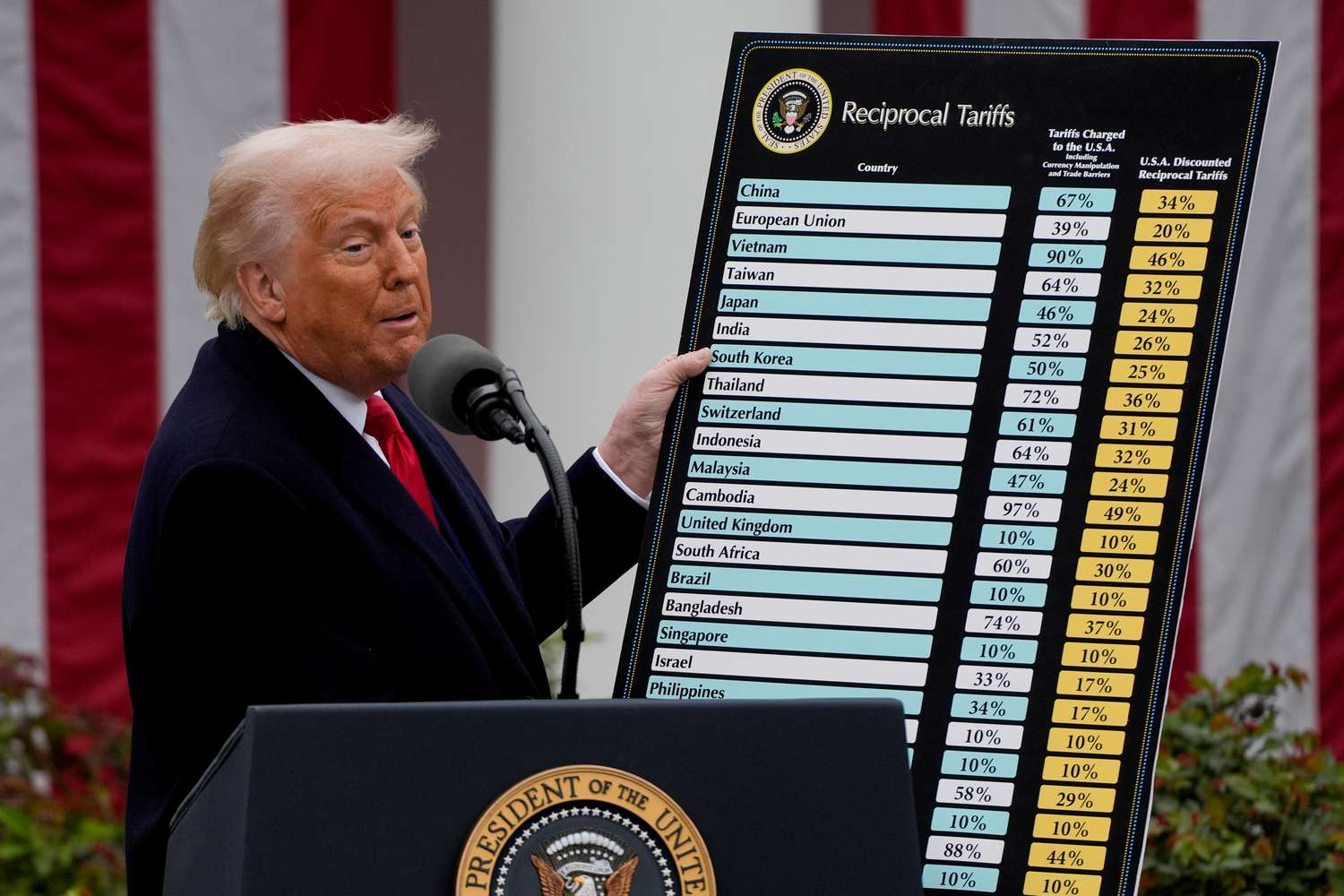
Key Takeaways
- President Donald Trump’s tariffs against trading partners announced Wednesday were billed as “reciprocal,” targeting countries that have their own trade barriers against U.S. goods.
- However, economists and trade experts said that because of the way the White House calculated the rates, these tariffs seem to be based on trade deficits.
- Trade experts questioned the strategy behind them since trade deficits can arise for reasons other than unfair barriers.
President Donald Trump’s “reciprocal” tariffs against trading partners announced Wednesday levy import taxes on friends, foes, and uninhabited islands, leaving trade experts guessing at the strategy behind them.
Trump’s long-awaited tariffs against U.S. trading partners will impose a blanket 10% import tax on everything brought into the United States, with higher rates for certain countries.
Trump initially said the tariff rates were based on countries’ own tariffs, trade barriers and “cheating” against US products. However, the tariff rates were calculated using a formula based on the U.S. trade deficit with each country, the U.S. Trade Representative later clarified in a statement.
The formula resulted in some outcomes that baffled economists and other experts. High tariffs apply to longtime U.S. allies (a 24% rate for Japan, 20% for the European Union) and the lowest to some of its adversaries (10% for Iran and Afghanistan.)
Several economists questioned the logic of tying tariffs to trade deficits.
“As a technical economist, I can tell you there’s really no methodology there,” Mary Lovely, a professor of economics at Syracuse, said in a webcast hosted by the Brookings Institution think tank. “There’s really no basis that this is going to solve the problem …I think the word ‘reciprocal’ is deeply misleading.”
Are Trade Deficits The Problem?
The USTR said its formula “assumes that persistent trade deficits are due to a combination of tariff and non-tariff factors that prevent trade from balancing.”
A trade deficit occurs when a country imports more from a country than it exports in terms of value. The U.S. runs an overall trade deficit with the rest of the world and has different trade balances with various countries. Although Trump has characterized trade deficits as the result of the surplus country “ripping off” its trading partner, few economists see it that way.
Economists note trade deficits often exist not because of policies like tariffs or other barriers but because of the concept of comparative advantage, the fact that some products are cheaper to make in some countries than others.
For example, Canada exports aluminum to the United States because our northern neighbor has a lot of cheap hydroelectric power, which makes the energy-intensive process of aluminum smelting more economical to carry out there than elsewhere.
Muddying the waters further is the fact that the “reciprocal” tariffs even target countries that buy more products from the U.S. than they sell due to the minimum 10% rate. Australia will pay the minimum tariff despite the fact that the U.S. had a $17.9 billion trade surplus with it in 2024.
Some economists said the tariffs were a starting point for negotiations and would likely be lowered.
“The market is assuming that these tariffs make such little economic sense that they won’t hold and/or will be negotiated down,” Jim Reid, global head of macro and thematic research at Deutsche Bank, wrote in a commentary.

Leave a Reply